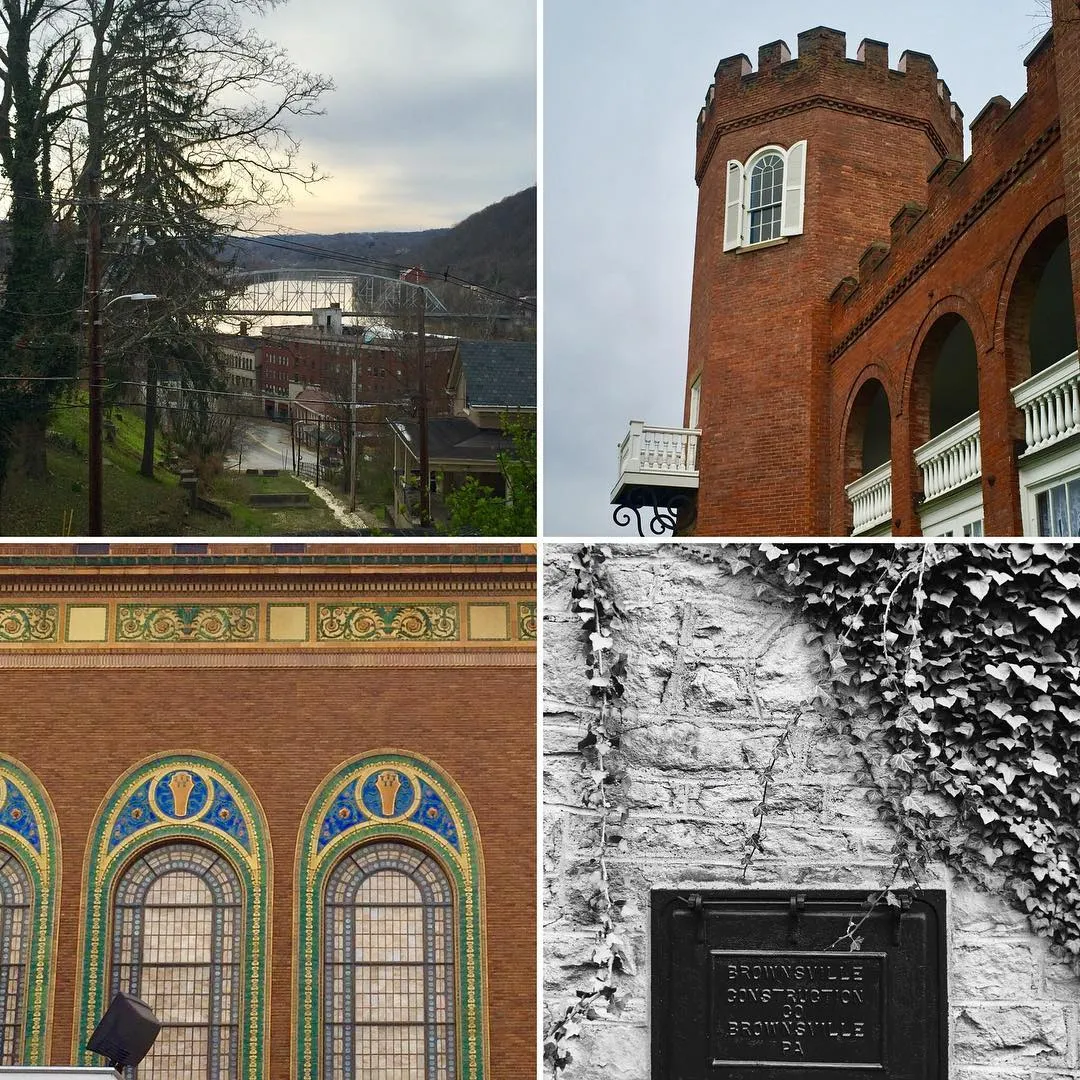Nemacolin Castle exists in an essential set of historic contexts. It is a landmark and focal point of Brownsville, one of the most historically significant towns in Southwestern Pennsylvania. This section of the report outlines the historical themes related to the Castle. However, the Castle does not reflect each theme equally or in the same way, such as Native Americans in Southwestern Pennsylvania. Much of the history and prehistory of the Native American peoples who once dwelt in Southwestern Pennsylvania has faded into obscurity.
Archaeologists have carefully reconstructed parts of the Native American story from the archaeological evidence that has been discovered. Still, many gaps remain in the popular understanding of these first inhabitants of our area, and very few comprehensive depictions of the local Native American cultures who lived in this region are accessible to the general public. Some of the earliest Native American sites documented in North America are located within twenty to thirty miles of Nemacolin Castle. The most famous of these is the Meadowcroft Rock Shelter in Avella, in Northwestern Washington County, which is believed by many to be the oldest site in North America.
The earliest inhabitants of Meadowcroft Rock Shelter predated later cultures, such as the Mound Builders, the Hopewell and Adena Peoples, and the Monongahela People. Although the Monongahela Valley is part of the Upper Ohio Valley area where Indian Mounds are found, the mounds found here by early settlers were generally much smaller than those further down the Ohio. They were often located in confined areas where towns developed. Some were destroyed as cities were built, while others were dismantled in early archaeological efforts, before the advent of modern archaeological standards.
At Monongahela City, for instance, several mounds were built by the Adena People 2,000 to 3,000 years ago, but late nineteenth-century archaeological investigations and later construction projects destroyed them. Numerous other Native American sites have been identified throughout the valley, as illustrated in Edwin Mayer-Oakes's "Prehistory of the Upper Ohio Valley." This seminal book contains maps of sites in the Ohio Valley and Monongahela Valley counties around Pittsburgh.
Many Native American sites dating from the early eighteenth century have been identified in Southwestern Pennsylvania. But, mysteriously, many Native Americans disappeared from the region before white settlements, and the earliest settlers encountered only a few small bands of individuals living in isolation. Some of the sites with earthen mounds were fortified Indian villages. The early histories of Brownsville differ from source to source in terms of whether the "Old Fort" at Redstone was an Indian Mound or a fortified town.
The Nemacolin Castle property was one of the mounded sites within early Brownsville. It is also referred to as the residence occupied by Nemacolin shortly before Col. Burd arrived. Nemacolin was the Native American who helped white settlers set the course of Route 40 past the Castle. Most likely, the site of the Castle was a fortified village, though there were at least two or three other mounded sites within view of it, some of which were probably much older and may have included burials.
According to Joshua Gilpin's journal, by 1809, all above-ground remains of any "Old Fort" at Brownsville had been destroyed. Gilpin's journal also mentions Native American burial remains unearthed in the construction of cellars near Nemacolin Castle, as does the 1811 book The Navigator. Texts from the 1840s and 1850s, such as James Bowman's articles in The American Pioneer, give further details on Native American sites encountered in Brownsville between 1758 and 1820.
Architecture Of The 1850s
Although the preceding historical contexts related to Nemacolin Castle and the Bowman family are of great interest to the Brownsville area, none is as well represented at Nemacolin Castle as the architectural styles of the mid-nineteenth century. Built over a decade during a brief building boom, Nemacolin Castle is one of a handful of large 1850s-era buildings still standing in western Pennsylvania. However, in western Pennsylvania, it is a very unusual, eclectic building that reflects eccentric taste and ostentatious spending on a scale almost unseen in residential buildings built in this region at that time.
On the other hand, when viewed in a national context, the building typifies a transition in architectural trends occurring across the nation. It even resembles the work of nationally well-known architects, such as Andrew Jackson Downing. Because of the significance of the Bowmans in Brownsville and the significance of Brownsville in early regional history, and because of the overwhelming importance of industry in the history of the Pittsburgh region, the Brownsville Historical Society has consistently attempted to interpret family, town, and industry themes at this site since its genesis as an organization. However, this house uniquely has qualities and stories reflecting national architectural history.
As architectural history is a distinct profession with its literature, academic professionals, and audiences, the society would benefit from marketing Nemacolin Castle as an architectural learning experience and from establishing the property as a venue to interpret, teach, and promote architectural history. This may not have been attempted in the past because few Brownsville Historical Society leaders had any contact with architectural historians. Likewise, the Castle's eclectric blend of architectural styles and its association with the so-called "Victorian Era", have made this site less interesting to previous generations of architectural historians who were biased against such buildings.
